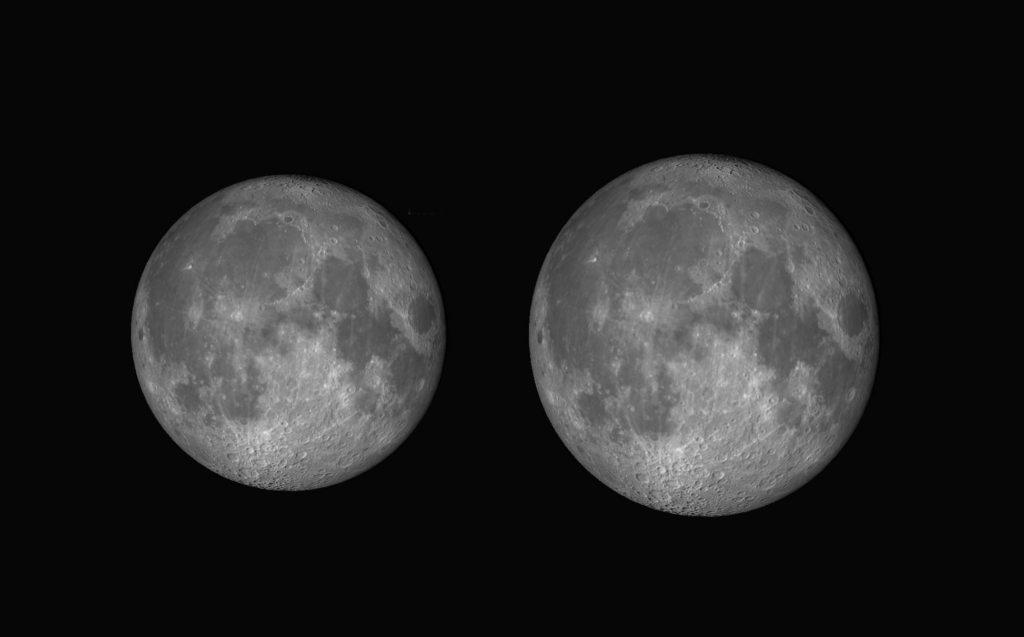Sky Report: July 3 – 9, 2023

The moon at its smallest/most distant and at its largest/closest. It’s trivial to see the difference on paper at eye distance but not in the sky. Graphic created with SkySafariAstronomy.com.There’s good information at https://www.space.com/supermoon-syndrome-february-full-moon-2019.html and https://www.wired.com/2015/10/supermoon-isnt-super-just-moon/
Venus, Mars, and the star Regulus are together in the evening sky, sitting about 20° above the west horizon 45 minutes after sunset. On the 3rd the three span 8° with Mars smack in the middle. Venus and Mars are slowly drawing apart – Venus is no longer approaching Mars — but both are approaching Regulus, and on the 9th there’s a nice conjunction as Mars passes only ¾° north of Regulus, and then the three span 5° and will fit in the view of binoculars. (Mars moves on, and on the 15th Regulus is smack in the middle.) All three set a few minutes earlier each day and you can visualize how we’ll lose all of them soon. (Then I’ll have to write about something else in the evening sky other than the planets and their endless changing positions and configurations; we’ll see if I’m up to it.)
Regulus is the brightest star in Leo. It’s a giant star some 140 times as brilliant as our sun and lies 80 light years from earth. Compare that to the distance to Mars which is 19 light minutes. The ratio is 1 minute to 4 years.
The other easily-visible planets are Jupiter and Saturn. Saturn rises shortly after Venus and Mars set, so for a few minutes before midnight the sky is planet-free. Saturn is low in the east around 1 a.m. and then higher as the night progresses. Note that the bright moon is just 3° from Saturn on the night of the 7th.
Jupiter rises around 3 am, and it’s the brightest thing in the sky unless the moon is up. Jupiter is a third of the way up the sky as dawn breaks. Jupiter and Saturn rise about four minutes earlier each night.
July 3 is the date of the first of the four so-called “supermoons” of 2023 and you’ll read plenty of hype here and there – but it’s entirely complete nonsense. The “supermoon” is so slightly larger and so slightly brighter than the year’s eight non-supermoons that you’ll never know the difference. The diagram below shows the moon at its closest and largest and at its most distant and smallest. Sure, when you put them side-by-side at normal reading distance a child can immediately spot the difference. But that’s not realistic. To compare, have someone hold a penny 6 feet away and notice its size. Then have them move it 10 inches farther and note the size – can you actually see the difference? Now have them hold it either at 6 feet or 6 feet 10 inches without telling you which it is, and you tell them whether it’s a “supermoon” or a regular moon. Not so easy! But to be realistic, have them hold it at either maximum or minimum distance without telling you which, memorize the size, and then one month later have them hold it at the other distance, and now tell them which was which. I rest my case.






Comments are closed.